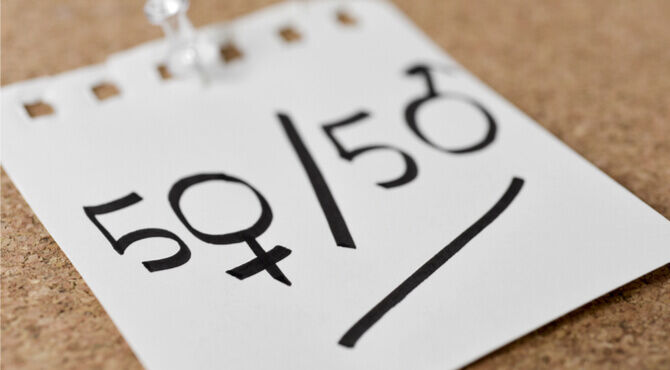Women twice as likely to receive lowest pay: Equal Pay Day
Today is Equal Pay Day, when women start to work for free. The date has been the same calendar for the past three years, highlighting the lack of progress closing the pay gap.

- Progress has stalled in closing the pay gap. It stands at 14.1% now – the same as it was in 2015 and 2016.
- If the gap closes at the rate it has over the last 5 years it won’t reach 0% until 2117.
- At 18.6% the gap is wider for women in their 50s, but has significantly grown amongst women in their 20s – from 1.1% in 2011 to 5.5% this year.
- The gap is highest in London (20.7%), followed by the South East at 16.3%. It is lowest in Wales, at 8.3%, and the North East at 10.2%. But while it is falling in London and the South East, by over 3 percentage points since 2011, it has risen in the North East by 1.5 percentage points.
- The gap is higher in the private sector, at 17.1% – but it has fallen by 4.3 percentage points since 2011. In the public sector, it has stayed flat at just above 14%. Fawcett research published earlier this year found that the mean aggregate pay gap for Pakistani, Bangladeshi, and black African women is 26% and 24% respectively.
- Women are almost twice as likely (1.8 times more likely) to receive the lowest pay – with 221,000 women earning less than the statutory minimum wage, 100,000 more women than men.
Related stories:
- Female representation on FTSE boards stalls
- Making D&I count: constructive disruption and more human HR
- Trust lacking in gender pay audits to close gaps: survey
Taking action
The Fawcett Society is asking all employers to make a pay gap pledge, including taking steps to make all jobs open for flexible working and more generous periods of parental leave for fathers.“All employers need to take a long hard look at their workplace culture,” says Sam Smethers. “Discrimination and sexual harassment can be hidden and more common than they think. Proactive steps are needed to root it out and give women confidence to report it.“Government should require employers to make every job a flexible working job, unless there is a good business reason not to. We also want to see a longer, more generous period of paid leave for fathers. This will help to address the unequal impact of caring roles which is one of the key drivers of the gap.“For the lowest paid we need to see the Real Living Wage adopted as the minimum wage in all our workplaces. A growing number of women are trapped in the lowest paid work.What can you do to close the pay gap?
As well as advising employers, the Fawcett Society is encouraging individuals to also take the lead.- Ask what your colleagues earn – break the taboo of talking about pay as pay secrecy is a great cover for pay inequality
- Ask your employer if they are aware of gender pay gap reporting and when they will publish their data. Ask to see their action plan.
- Find out what the process is for reporting sexual harassment in your workplace. If you are experiencing harassment and feel able to do so take the first step and report it.
Gender pay and pensions
Drawing attention to the growing inequalities in later life, Catherine Stewart, retirement expert at Scottish Widows, commented: “The gender pay gap highlighted by Equal Pay Day is only the start of the financial divides between men and women. This inequality carries through to later life, as women’s retirement prospects are generally worse than men’s. The persistent gender pay gap, maternity leave and career breaks can all hold back women’s earning potential and this often impacts pension savings.“Closing the pay gap is a crucial first step, but we must also level the pensions playing field. As a starting point, we recommend that the government adjust current restrictions on automatic enrolment (AE) in to a workplace pension scheme. Almost a third (32%) of women who work part-time earn less than the £10,000 qualifying earnings threshold and are missing out on valuable employer contributions. “This is an unfair barrier, so scrapping the minimum earnings threshold would make pensions more inclusive for part-time working women. We also recommend lowering the minimum age for automatic enrolment from 22 to 18, as this would give some women four extra years of saving to help mitigate future periods of part-time work later in life.”For related news and features, visit our HR section. Look out for the launch of 2018's Relocate Awards, entries open in January. Relocate’s new Global Mobility Toolkit provides free information, practical advice and support for HR, global mobility managers and global teams operating overseas. Access hundreds of global services and suppliers in our Online Directory
Access hundreds of global services and suppliers in our Online Directory
©2025 Re:locate magazine, published by Profile Locations, Spray Hill, Hastings Road, Lamberhurst, Kent TN3 8JB. All rights reserved. This publication (or any part thereof) may not be reproduced in any form without the prior written permission of Profile Locations. Profile Locations accepts no liability for the accuracy of the contents or any opinions expressed herein.

































